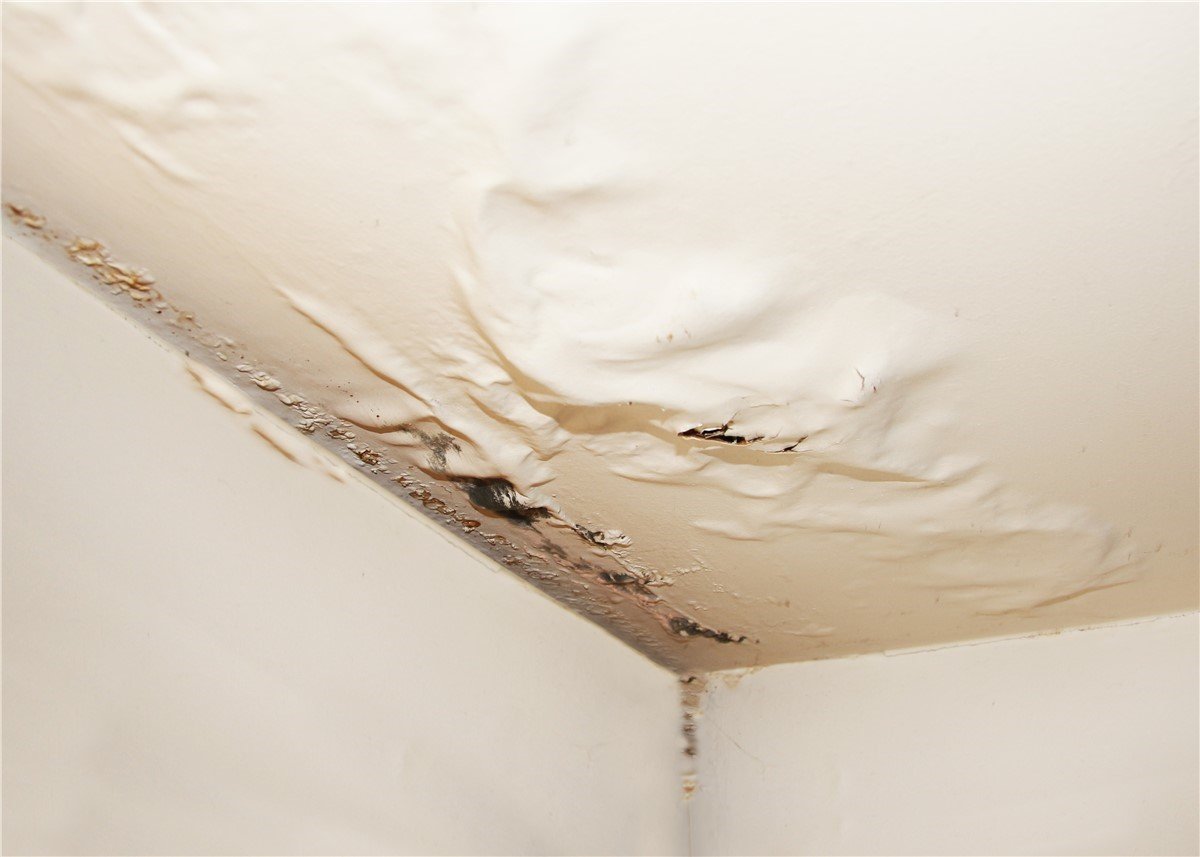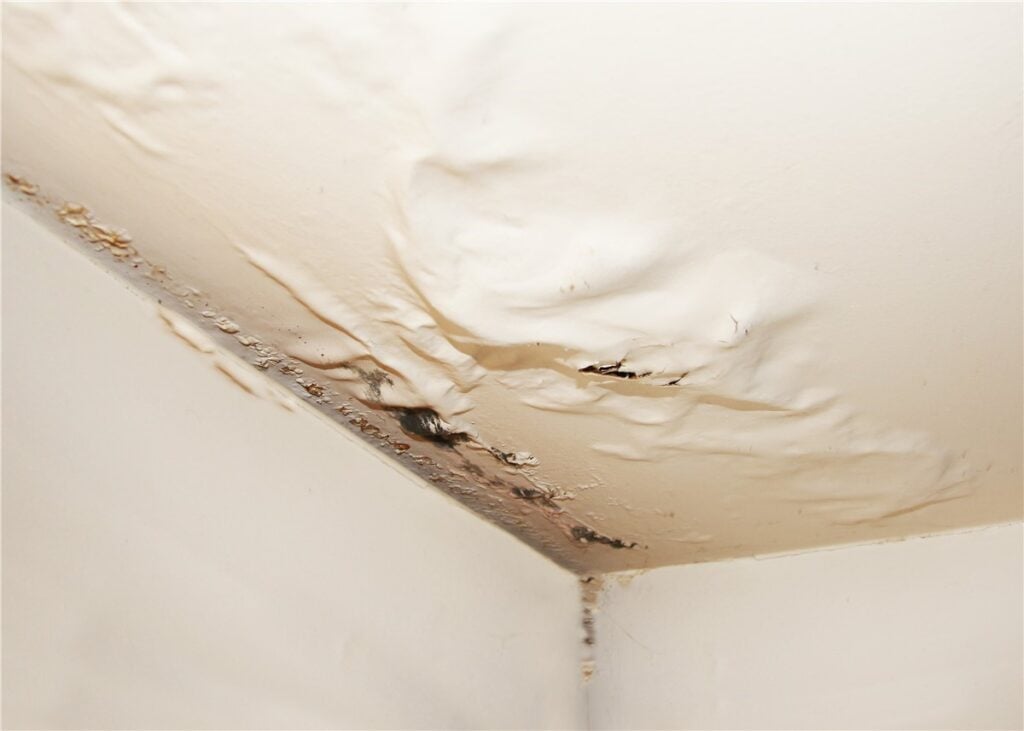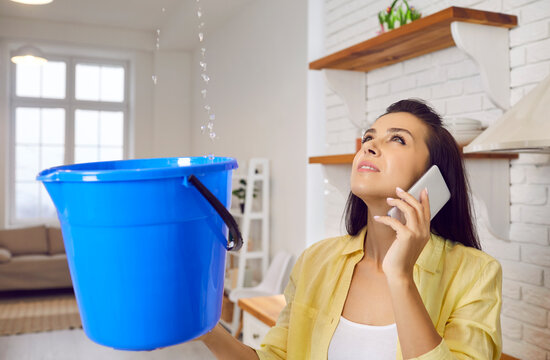
Why Do Roofs Leak During Florida’s Rainy Season?
Roof Repairs
Roofing
Storm Damage
October 6,2025

You see a water stain spreading on your ceiling after a storm. This could be a sign that your roof has been compromised and may need a roof leak repair. This guide explains the common causes of these leaks and outlines the steps you can take to address them before a minor issue becomes a major repair.
Why Are Roof Leaks So Common in Florida?
Florida’s climate is uniquely harsh on roofing systems. The daily cycle of intense sun and sudden afternoon storms causes materials to expand and contract, which weakens seals and loosens fasteners over time.
This constant stress is compounded by wind-driven rain, which forces water sideways under shingles and into small cracks where it wouldn’t normally go. Add in high humidity that prevents roofs from fully drying, and you have the perfect recipe for accelerated aging and material failure. A Florida roof endures stress that roofs in milder climates simply don’t face.
What Causes Most Roof Leaks?
Most leaks trace back to a few common points of failure. The primary culprits are damaged or missing shingles, which get lifted by wind or become brittle from UV exposure. Another weak point is deteriorated flashing—the metal seals around chimneys, vents, and skylights. Florida’s heat cycles cause these seals to crack and pull away, creating a direct path for water.
Clogged gutters also contribute by forcing water to back up and seep under the roof’s edge. Over time, all roofing materials will degrade, but Florida’s climate significantly shortens their effective lifespan. A roof that might last 25 years elsewhere may only last 15-20 years here before age-related leaks begin.
How Do You Find the Source of a Roof Leak?
Finding a leak’s origin point requires some detective work, as water often travels along beams and behind walls before appearing as a stain. The entry point on your roof will always be higher than where the damage is visible inside.
If you have attic access, look for dark streaks or water stains on the underside of the roof deck during daylight. From the ground, use binoculars to scan for missing shingles or damaged flashing.
Safety Note: Never climb onto your roof, especially when it’s wet. Shingles can be dangerously slippery and are easily damaged when hot. A professional inspection is the safest and most accurate way to diagnose a leak.
Does Homeowners Insurance Cover Roof Leaks?

Coverage depends entirely on the cause of the leak. Insurance policies are designed to cover sudden, unexpected events like storm damage from a hurricane or a fallen tree. They are not designed to cover problems arising from old age, gradual deterioration, or a lack of maintenance.
If a severe storm tears off shingles and your roof leaks, the damage should be covered. If your 18-year-old roof leaks because the materials have reached the end of their service life, you will have to navigate the complex storm damage roof insurance claim process, where denial is a real possibility.
Insurance Tip: Document everything. Take photos of the leak and any interior damage immediately. Keep all maintenance records and repair receipts, as they can be crucial for proving your claim is related to a covered event like a storm, not neglect.
What Should You Do When You Discover a Leak?
Discovering a leak requires immediate action to prevent water from causing extensive damage to your insulation, drywall, and home structure. First, place buckets or containers under any active drips and move furniture, electronics, and other valuables away from the affected area. Pay close attention to your ceiling—if you notice a sagging or bulging spot, it means water is pooling and putting immense pressure on the drywall. To prevent a messy and destructive ceiling collapse, you can carefully puncture the center of the bulge with a small screwdriver. This creates a controlled drain point, allowing the water to funnel into a bucket below.
While these steps can mitigate immediate damage, they are not permanent solutions. A temporary tarp may offer some protection, but you should schedule a professional inspection as soon as possible, as every subsequent rainstorm will only worsen the problem.
How Can You Prevent Roof Leaks?
Proactive maintenance is the most effective way to prevent leaks. We recommend scheduling a professional roof inspection before the rainy season begins in June. Key maintenance tasks include keeping your gutters clean, trimming overhanging branches, and replacing any damaged shingles promptly. After any significant storm, it’s wise to walk the perimeter of your home and inspect your roof from the ground, even if you don’t see an active leak.
When Is It Time to Call a Professional?

Some situations demand immediate professional expertise. Call a licensed roofer if you have:
- An active leak during or after rain.
- Visible water stains on your ceiling.
- Multiple missing or damaged shingles.
- A roof that is approaching 15-20 years of age.
A professional can identify underlying issues that an untrained eye would miss, ensuring that repairs are done correctly and meet Florida’s stringent building codes.
Protect Your Home This Rainy Season
A leaking roof is a serious issue that requires a clear, professional assessment. Understanding the condition of your roof is the first step toward keeping your home safe and dry through Florida’s storm season.
Contact FoxHaven Roofing today for a complimentary inspection. We’ll provide an honest assessment of your roof’s condition and a clear plan to address any vulnerabilities.

